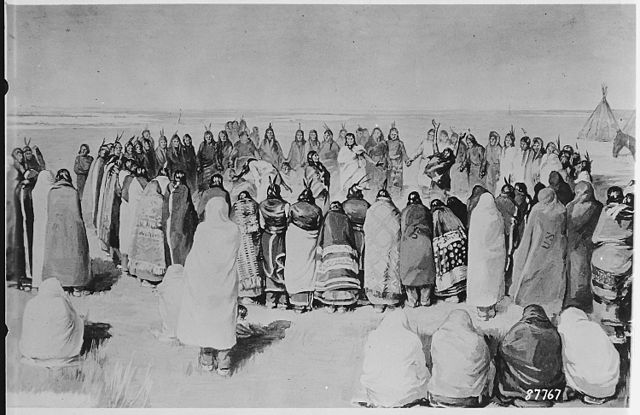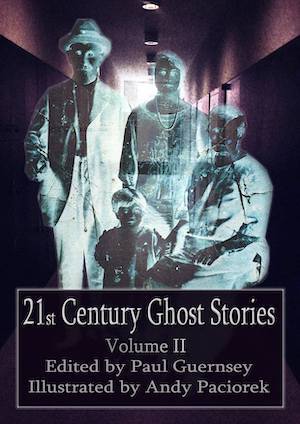
Arapaho Ghost Dance. Illustrated By An Unknown Artist Around 1900 And Based On Photographs Taken By Anthropologist James Mooney.
Marathon Dancing To Bring Back The Dead
The Ghost Dance was a short-lived religious movement that swept through Western Native American cultures during the years that straddled the final two decades of the 1800s. The Movement came along following an extended period of disease, displacement, starvation, and genocide visited on the Indian tribes as a result of the relentless westward expansion of white settlers backed by the deadly force of the U.S. Army. Native American spiritual leaders told their followers that the Ghost Dance would reunite them with the spirits of their dead, bring back the buffalo, which had been slaughtered to the point of near extinction by European Americans, and usher in a new era of prosperity, cooperation among the tribes, and an end to European-American encroachment.
The ritual, which involved ceremonial dances that lasted for five days, originated around 1870 among the Paiute tribe of what is now Nevada. In the late 1880s, preached and promoted by Paiute holy man Wovoka, the Ghost Dance began catching on rapidly among Native groups from Oklahoma to California. The ceremonial movements themselves were based on the circle dances that many groups had performed since prehistoric times.
In spite of the peaceful and hopeful goals of the Ghost Dance as expressed by Wovoka, the Movement soon sprouted militant offshoots—a development that greatly alarmed settlers, who then urged the Army to suppress Ghost Dancing among some of the tribes. For example, some groups of desperate Lakota Sioux (South Dakota) and other warriors began spreading the belief that magical “ghost shirts” would render Native fighters invulnerable to cavalry bullets. The Ghost Dance also seems to have provided some of the inspiration for decisions by several Lakota bands to defy an array of Army orders aimed at destroying their traditional ways of life. This resistance triggered the December 29, 1890 Wounded Knee Massacre of more than 150 Native American people, mostly women and children.
Following Wounded Knee—regarded by some historians as the final battle in America’s Indian Wars—interest in the Ghost Dance dropped off because of the fear of Army reprisals against the ritual’s practitioners. However, some tribes continued to practice it.

